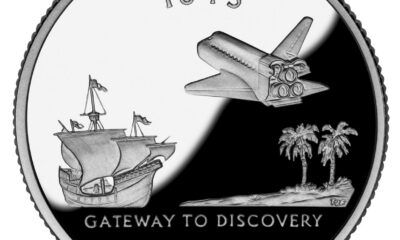Human Interest
Silk Road notes 4: learning

This fourth instalment of the Silk Road Notes series shows the distorted picture the Cleveland Museum’s Silk Road exhibit gives to the development of writing and learning along that ancient trade route. As ever, this exhibit gives credit to Muslims for developing real learning. In fact, the credit is due, not to the Muslims, but to the cultures they conquered.
Development of writing along the Silk Road
EXHIBIT SIGN:
Paper, Pen and Ink
As paper spread from east to west along the Silk Road, books became more bountiful than ever before. Chinese artists learned to smear ink on carved wood blocks, which they used to print thousands of pages very quickly. When paper came to the Islamic world, a passion for reading and writing blossomed there, and Islamic scholars took the lead in the study of science, language and literature.
WHAT WASN’T SAID:
-

A written discourse about the cursive style, done in the cursive style fully similar to that of the Jin dynasty. Artist: Mi Fu (12th century A.D.)
That Chinese calligraphy was also considered beautiful, as were Hebrew and Western Calligraphy used in illuminated documents.
- That they did not treat equally or fairly the qualities of other cultures, using “smeared” for ink application, and “magnificent, graceful, beautiful, flowing,” for Islamic writing; that Islam produced “stunning” discoveries, adjectives not applied to other cultures.
- That if Islamic scholars led in all the sciences, why Islam is so backward now; that if they produced so many books, why they trail behind the western countries now.
- That Islam has always taken on the cultures of the people through which it passed and looted, and kept the enslaved illiterate.
FACTS:
- Islam’s practice of conquest was part of the directives of Mohammed; acquiring slaves and booty encouraged. Therefore, the spoils of war made it practically unnecessary to strive for values of the western world. When masters have workers, they no longer need to learn or be productive; hence the population is devalued and creativity and production suffer dramatically.
- As seen in the Koran and other Islamic scriptures, Muslims were barbarian, slaughtering wherever they went in whatever cultures they met, and the same exists today. Therefore, how is it possible that they can claim a lofty culture in the middle (the Golden Age, for example)? And if this were actually so, what caused the changes from barbarian to civilized and the subsequent reversal.
EXHIBIT SIGN:
THE PATHS OF IDEAS
We may take it for granted today. We may even claim we can do without it. But of all the treasures that moved along the Silk Road, none was more powerful than paper. Light, flexible and inexpensive to make, paper made an ideal surface for recording ideas. As paper spread from China to the Middle East, it opened up a remarkable age of writing, reading, and learning.
WHAT WASN’T SAID:
[ezadsense midpost]
Once conquest was made, survivors of the slaughter were converted to Islam. Therefore, it might be prudent to question the original identity of those who owned and ran the paper manufacturers/mills, again in Samarkand, where we know that a large Jewish population existed.
FACTS:
- The world’s oldest paper book is Chinese, AD 256; with the oldest printed book (using woodblock printing) from China’s Han dynasty (202 BC-AD), although discoveries suggest paper was used more than 10 years before, in 8 BC. After the Muslim defeat of the Chinese in the Battle of Talas in 751 (today Kyrgyzstan), the invention spread to the Middle East.; the first paper mill was founded in Samarkand.
- The use of water-powered pulp mills for preparing the pulp material used in papermaking dates back to 8th c. Samarkand, The Muslims introduced the use of trip hammers (human- or animal-powered) in the production of paper, replacing the traditional Chinese mortar and pestle method. By the 9th century, Arabs were using paper regularly for their Qur’an; Arabs made books lighter, although vellum was preferred for the Qur’an. By the 12th century in Marrakech in Morocco, a street was named Kutubiyyin or booksellers, which contained more than 100 bookshops. (Ketubim means “writings” in Hebrew) Chinese later employed the trip-hammer.
- Since the First Crusade in 1096, paper manufacturing in Damascus had been interrupted by wars. Egypt continued with the thicker paper, while Iran produced the thinner papers. Papermaking was diffused across the Islamic world, from where it was diffused further west into Europe. Paper manufacture was introduced to India in the 13th century by Arab merchants, where it almost wholly replaced traditional writing materials.
- In America, archaeological evidence indicates that a similar bark-paper writing material, amatl, was used by the Mayans no later than the 5th century AD. It was in widespread use among Mesoamerican cultures until the Spanish conquest. Paper making as more common to the European practice spread to the American continent first in Mexico by 1575 and then in Philadelphia by 1690.
EXHIBIT SIGN:
By the early 1200s, Baghdad was a virtual paradise for readers and writers, with an enormous stationers market, more than 100 bookshops and 36 public libraries. One magnificent library belonged to a college called the Mustansinya Madrasa, its reading rooms provide paper, pens and oil lamps so students could copy the texts and make books of their own. Each student also enjoyed free tuition, room and board, medical care and a gold coin for every month of his stay.
WHAT WASN’T SAID:
- What happened to all these students of learning where now exists an illiterate, death-cult society.
- That the Qur’an encourages violence, death, and plundering. Therefore, if the Arabs indeed studied this way, what caused the drastic deterioration of their culture.
- If the conquered people, the People of the Book (dhimmis), were permitted access to the libraries.
FACTS:
- An important reason for Judaic survival is that manual labor was never reviled In Judaism, but traditionally respected. Labor leads to artisanship and to literacy for a fulfilled life. Therefore, Jews were also prominent among the craftsmen and technicians at the junctures of civilization where industry, technology, and commerce flourished. The market for Judaic artisanship was universal. Art is inherent to artisanship. The former soars in the world of the imagination, and the latter produces the practical things that enhance the environment and prosperity. Through the written word, the reverence of learning, artisanship, and the subjective arts of imagery, Jews became quintessentially a creative people and creativity was their salvation.
- Unlike the Torah, the Qur’an does not encourage reading and artisanship. The Qur’an exhorts violence, looting, enslavement and murder. Enslavement encourages sloth in the master. We can wonder what happened to the virtual paradise in Baghdad when writers and readers were not rewarded for industry. Why and how did this magnificence die, so that one Islamic country’s literacy rate is as low as 15.2%?
EXHIBIT SIGN:
A WAY WITH WORDS
For artists in early Baghdad, words were shapes as well as sounds. The Arabic language blossomed into a visual art as scribes made graceful copies of the Islamic holy book, the Koran. But calligraphy, the art of beautiful writing, soon moved beyond the page. With the spread of Islam, the flowing letters of the Arabic alphabet began to wind around serving dishes, embellish clothing and splash across doorways, ceilings and walls.
WHAT WASN’T SAID:
- That writing was invented in Sumeria, the fertile crescent of Iraq; 3500 BCE.
- That other cultures produced beautiful writing, also considered art forms.
FACTS:
- With the introduction of Christianity, came magnificent illuminated manuscripts (manu – hand; script – written), made mainly by monks and nuns in monastic scriptorium. A scribe did the calligraphy (Greek: kali – beautiful; graphia – writing); an illuminator decorated the book; a bookbinder sewed the pages into book format, made the leather binding with gold and precious colors. The Tres Riches Heures and The Book of Kells are two examples of famous exquisite manuscripts that have survived to this day.
- Of existing examples of historical ketubot (marriage contracts) from Jewish communities around the world, the vast majority fall into the category of floral and ornamental. Jewish ketubah artists drew on the natural world for inspiration, avoiding graven images, and were as diverse as the countries where produced – florals of Italy, Morocco, India and Afghanistan. Others are of historical design, formal, or stylized, folk or contemporary art.
- Chinese calligraphy is considered an art form, widely practiced and revered in Asia – Korea, Taiwan, Vietnam, China, and Japan. The characters can be traced to 4000 BC, and are closely related to ink and wash paintings. They are distinguishable from other cultural arts because they emphasize motion. Calligraphy has led to the development of many forms of art in china, including seal carving, ornate paperweights, and inkstones. In Imperial China, the graphs on old steles, dating back to 200 BC, are still accessible.
(To be continued)
Earlier Silk Road Notes articles:
[ezadsense leadout]
[subscribe2]
Author of “Confronting the Deception,” Tabitha Korol began her political career after 9/11, with letters to the editor and essays, developing a readership and earning two writing awards along the way. Her work appeared on Academia.edu, Christian Action Network, Conservative News and Views, Dr. Rich Swier, iPatriot, Liberty News & Views, LobbyistsforCitizens.com; Published Reporter, Renew America, Ted Belman, The Noisy Room, Trevor Loudon’s New Zeal, Virginia Christian Alliance, WebCommentary, and others.
-

 Executive4 days ago
Executive4 days agoThe Last Supper: New York’s Socialist Feast
-

 Civilization4 days ago
Civilization4 days agoYoo Hoo, VP Vance—Your Character is Showing!
-

 Civilization5 days ago
Civilization5 days agoIvory Tower Thinking and Narcotics Boats
-

 Guest Columns3 days ago
Guest Columns3 days agoCongressional Leaders See Far Higher Stock Returns Than Peers
-

 Civilization4 days ago
Civilization4 days agoFacing Facts & Rolling Back Mythologies: The New National Security Strategy
-

 Civilization2 days ago
Civilization2 days agoThe Legal Logic Behind U.S. Operations Against Narco-Terrorist Networks
-

 Civilization13 hours ago
Civilization13 hours agoDC Pipe Bomb Arrest Raises Questions About Christopher’s Wray’s FBI
-

 Civilization3 days ago
Civilization3 days agoHow Trump Changed America















David Sullivan liked this on Facebook.
Digg Patriots liked this on Facebook.
[…] Silk Road notes 4: learning […]
[…] Silk Road notes 4: learning […]
[…] Silk Road notes 4: learning […]